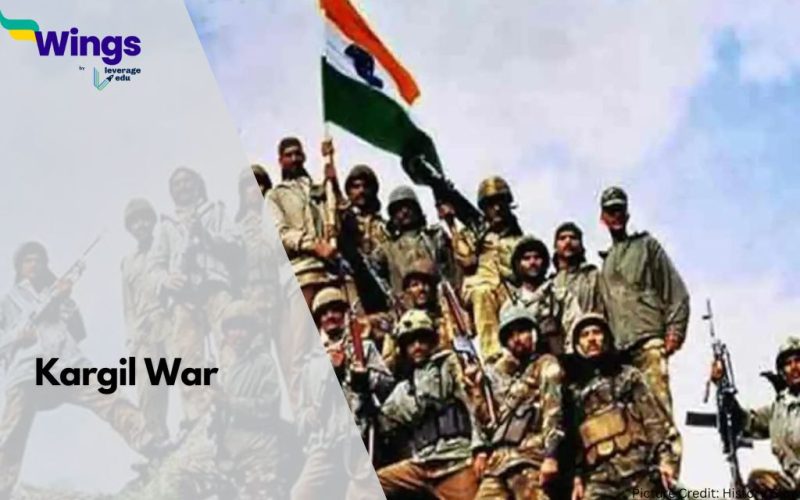The Kargil War was fought between India and Pakistan from May 1999 to July 1999. It all happened in the Kargil district of Jammu and Kashmir and other regions along the Line of Control (LoC). This conflict is also referred to by its code name Operation Vijay, given by the Indian military. India celebrates Vijay Diwas every year on July 26 to commemorate and pay tribute to soldiers who lost their lives during the historic Kargil War. This day marks India’s momentous victory over Pakistan. In this blog, we will delve into the origins of the conflict,
Origins of the conflict
The Kargil War was fought 52 years after independence. It began shortly after signing the Lahore declaration in 1999 when Pakistan army forces occupied India’s winter-vacated posts. Its origins can be traced back to the long-standing disputes between India and Pakistan over the region of Kashmir. However, this is not the only responsible factor. Other reasons such as the 1947 partition of British India into two different nations and the subsequent wars between them are also equally important.
Also Read: Carnatic War Chronicles: Battles and Results
Partition and the Instrument of Accession
During the time of India’s independence from British rule in 1947, the country was subdivided into India and Pakistan. The princely state of Jammu and Kashmir faced a critical decision. Although it was a Muslim-dominated region, Maharaja Hari Singh, the then-ruler of Kashmir, hesitated to join either of the two nations. However, as Pakistani invaders attacked Kashmir, Maharaja sought military assistance from India and in return, signed the Instrument of Accession, and acceded Kashmir to India. This led to the first Indo-Pakistani war in 1947-48.
Ceasefire Line and the Shimla Agreement
The 1947-48 war between India and Pakistan resulted in the establishment of the Line of Control. This line divided Kashmir into Indian-administered Jammu and Kashmir and Pakistan’s Azad Jammu and Kashmir. Moreover, it serves as the de facto border between the two countries and was a part of the Shimla Agreement. Both nations were actively engaged in wars throughout the 1980s and 1990s.
After the wars of 1947-48 and 1965, the Tashkent Agreement was signed by the Indian Prime Minister Lal Bahadur Shastri and Pakistan’s President General Ayub Khan.
Also Read: Third Carnatic War: Causes, Battles and Impact
The Kargil War
The Kargil War was a three-month-long struggle for power between India and Pakistan. It commenced in May 1999 when Pakistani soldiers and militants, disguised as Kashmiri militants, infiltrated the Kargil district of Jammu and Kashmir. This incursion was named Operation Badr by Pakistan and managed to occupy strategic positions along the Line of Control (LoC) in the Kargil region.
Upon detecting infiltration on 03 Mary 1999, India ordered its army and air force to retaliate and push back the intruders. The first air-to-ground strike was launched by the Indian Airforce on 26 May. The war took place in harsh terrain regions of 5,000 above sea level. Accordingly, meetings and conferences were held between the diplomats of both countries but no results were seen. Pakistani Foreign Minister Sartaj Aziz visited New Delhi on June 12. Eventually, on July 11, Pakistan’s Prime Minister Nawaz Sharif announced that its forces would withdraw, given that India gave them enough time until July 16 to do so.
Technology During the Kargil War
Technology played an integral role during the Kargil War. To maintain the upper hand, it was essential for the Indian subcontinent to leverage heavy technology along with armed forces. During this war, both nations used heavy artillery including rocket launchers and howitzers. Additionally, Unmanned Aerial Vehicles (UAVs) and Unmanned Aerial Surveillance (UAS) systems helped to gain insights into enemy movements.
Operation Safed Sagar, a codename assigned to the Indian Air Force, was also launched during the 1999 Kargil War. Interestingly, it is also the first large-scale use of Airpower in the Jammu and Kashmir region since the Indo-Pakistan War of 1971. In addition to this, ground attack aircraft including MiG-21s, MiG-23S, MiG-27s, Mirage 2000, and Jaguars were also deployed to mitigate the damage caused by the opponents.
Stay informed about Indian history and broaden your general knowledge with our dedicated section.
 One app for all your study abroad needs
One app for all your study abroad needs













